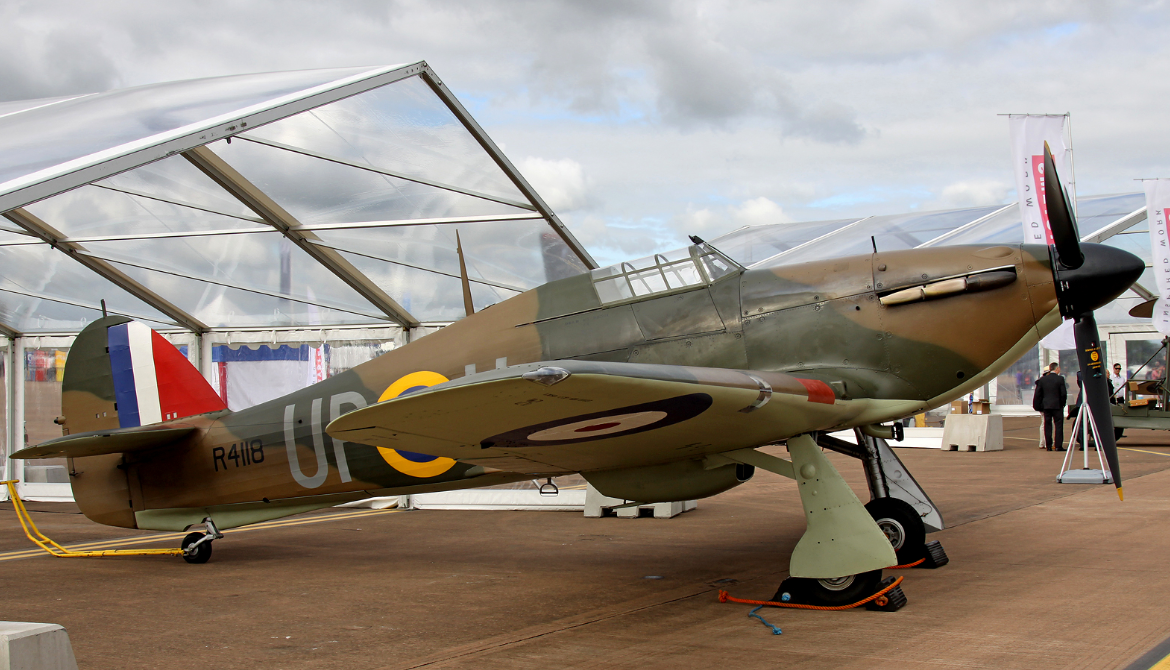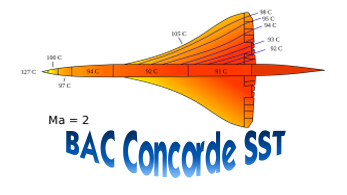Hawker Aircraft Limited Hawker Hurricane Mk.1
 |
|
| Hurricane Mk I, R4118, similar to what would have been flown during the Battle of Britain | |
| Role | Fighter aircraft |
|---|---|
| National origin | United Kingdom |
| Manufacturer | Hawker Aircraft |
| Designer | Sydney Camm |
| Built by | |
| First flight | 6 November 1935 |
| Introduction | December 1937 |
| Primary users | Royal Air Force |
| Produced | 1937–1944 |
| Number built | 14,487 (UK and Canada) |
| Variants | Hawker Hurricane variants |
| Developed into | Hawker Typhoon |
.
History Hawker Aircraft Limited
Hawker Hurricane Mk.1
First flight 6 November 1935 Produced 1937–1944

The Hawker Hurricane is a British single-seat fighter aircraft of the 1930s–40s which was designed and predominantly built by Hawker Aircraft Ltd. for service with the Royal Air Force (RAF). It was overshadowed in the public consciousness by the Supermarine Spitfire during the Battle of Britain in 1940, but the Hurricane inflicted 60% of the losses sustained by the Luftwaffe in the campaign, and fought in all the major theatres of the Second World War.
The Hawker Hurricane is a low-wing cantilever monoplane with retractable undercarriage and an enclosed cockpit. The primary structure of the fuselage was a Warren truss box-girder with high-tensile steel longerons and duralumin cross-bracing, which were mechanically fastened rather than being welded. Over this, a secondary structure composed of wooden formers and stringers covered with doped linen gave the fuselage a rounded section. The majority of the external surfaces were linen, except for a section between the cockpit and the engine cowling which used lightweight metal panels instead
Variants

-
Variants

Yugoslavian Hurricane Mk. IV - Hurricane Mk.I
- First production version, with fabric-covered wings, a wooden two-bladed, fixed-pitch propeller (first 435) or three blade two -pitch propeller, powered by the 1,030 hp (770 kW) Rolls-Royce Merlin Mk.II (first 364) or III engines and armed with eight .303 in (7.7 mm) Browning machine guns. Produced between 1937 and 1939.
- Hurricane Mk.I (revised)
- A revised Hurricane Mk.I series built with a de Havilland or Rotol constant speed propeller (from February 1940), metal-covered wings, armour and other improvements. A total of 4,200 Mk.Is were built; 1,924 by Hawker, 1,850 by Gloster Aircraft Company and 426 by Canadian Car and Foundry between December 1937 and October 1941. Apart from 30 retained in Canada the Canadian Car and Foundry Hurricanes were shipped to England to be fitted with engines.
Photo Gallery
Hawker Aircraft Limited
Hawker Hurricane Mk.1
First flight 6 November 1935 Produced 1937–1944


Hawker Aircraft Limited
Hawker Hurricane Mk.1
First flight 6 November 1935 Produced 1937–1944
General Info
-
-
- Crew: One
- Length: 32 ft 3 in (9.83 m)
- Wingspan: 40 ft 0 in (12.19 m)
- Height: 13 ft 1.5 in (4.001 m)
- Wing area: 257.5 sq ft (23.92 m2)
-
Powerplant
-
-
- Empty weight: (2,606 kg)
- Gross weight: (3,479 kg)
- Max takeoff weight: (3,951 kg)
- Powerplant: 1 × Rolls-Royce Merlin XX V-12 liquid-cooled piston engine, 1,185 hp (884 kW) at (6,400 m)
- Propellers: 3-bladed
-
Performance
- Maximum speed: (550 km/h, ) at (6,400 m)
- Range: 600 mi (970 km,)
- Service ceiling:(11,000 m)
- Rate of climb: 2,780 ft/min
Armament
-
-
- Guns: 4 × 20 mm (0.79 in) Hispano Mk II cannon
- Bombs: 2 × 250 or 500 lb (110 or 230 kg) bombs
-
Links to Youtube & Others
Owing to the Hurricane's rugged construction, ease of maintenance and repair in the field, and its docile landing and take-off characteristics, coupled with a wide-track undercarriage, it was selected to go to France as the principal RAF fighter.
Hawker Aircraft Limited Hawker Hurricane Mk.1
After his first flight in October 1939, Hurricane pilot Roland Beamont subsequently flew operationally with 87 Squadron, claiming three enemy aircraft during the French campaign.
Youtube Link
Throughout the bad days of 1940, 87 Squadron had maintained a proficient formation aerobatic team, the precise flying controls and responsive engines permitting precision formation through loops, barrel rolls, 1 g semi-stall turns and rolls off half-loops .












